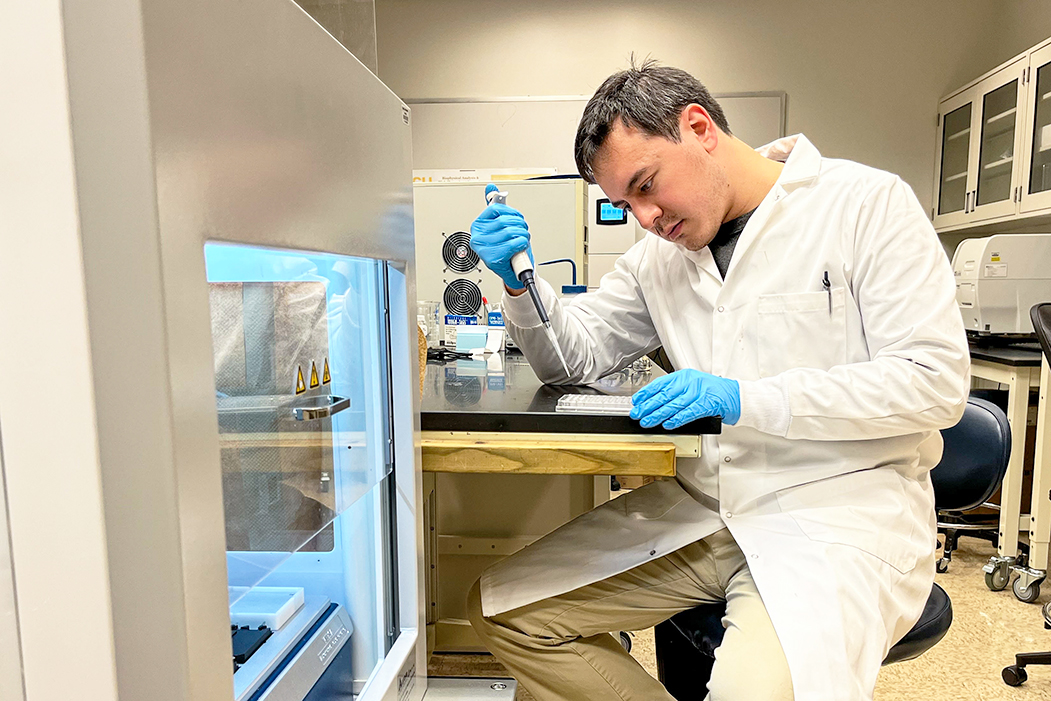
"The VERSA Spotter has enabled our lab to construct our own microarrays. Thanks to the microarray printer, we now are easily construct microarrays to analyze glycan-protein interactions which is a significant resource to our lab in particular."
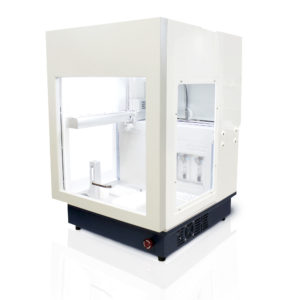
Aurora’s SPOT synthesis technique, using cellulose supports and liquid handling technology, led to the development of the VERSA series microarray printer (microarrayer). With expertise in life science robotics, Aurora addressed the growing demand for automated solutions in peptide synthesis and microarrays. The VERSA microarray spotter, with the nano-pipettor head, enables precise contact or non-contact spotting, supporting grams to milligrams of combinatorial chemistry.
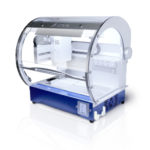
VERSA for Peptides
Single Channel
Small and Compact
40 nL – 100 µL Spotting Volume
0.05 mm Positioning Error
Optional UV/HEPA Enclosure
Compatible with all Slide Types
Optional Humidity Control
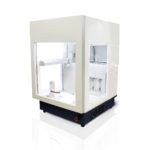
VERSA for Cells
Single Channel
Increased Deck Area
40 nL – 100 µL Spotting Volume
0.05 mm Positional Error
Optional UV/HEPA Enclosure
Optional Sonicated Wash station
Optional Humidity Control
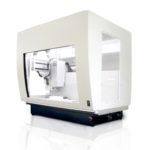
VERSA for DNA
10, 20 or 35 Channel
Simultaneous Peptide Spotting
Bulk Peptides Quickly Constructed
Heavily Customizable
Optional UV/HEPA Enclosure
Compatible with all Slide Types
Optional Humidity Control
Meade, P.; Strohmeier, S.; Bermúdez-González, M. C.; García‐Sastre, A.; Palese, P.; Simon, V.; Krammer, F. Journal of Virology 2023, 97 (1). https://doi.org/10.1128/jvi.01070-22.
Turner, J. S.; Zhou, J.; Han, J.; Schmitz, A. J.; Rizk, A. A.; Alsoussi, W. B.; Lei, T.; Amor, M.; McIntire, K. M.; Meade, P.; Strohmeier, S.; Brent, R. I.; Richey, S. T.; Haile, A.; Yang, Y.; Klebert, M.; Suessen, T.; Teefey, S. A.; Presti, R.; Krammer, F.; Kleinstein, S. H.; Ward, A. B.; Ellebedy, A. H. Nature 2020, 586 (7827), 127–132. https://doi.org/10.1038/s41586-020-2711-0.
Meade, P.; Kuan, G.; Strohmeier, S.; Maier, H. E.; Amanat, F.; Balmaseda, Á.; Ito, K.; Kirkpatrick, E.; Javier, A.; Gresh, L.; Nachbagauer, R.; Gordon, A.; Krammer, F. MBio 2020, 11 (1). https://doi.org/10.1128/mbio.03243-19.
Amanat, F.; Meade, P.; Strohmeier, S.; Krammer, F. Emerging Microbes & Infections 2019, 8 (1), 155-168. https://doi.org/10.1080/22221751.2018.1564369.
Kuo, C. T.; Lu, S. R.; Chen, W. M.; Wang, J. Y.; Lee, S.; Chang, H.-H.; Wo, A. M.; Chen, B. P. C.; Lee, H. Lab on a Chip 2018, 18 (16), 2453–2465. https://doi.org/10.1039/c8lc00423d.
Meade, P.; Latorre‐Margalef, N.; Stallknecht, D. E.; Krammer, F. Emerging Microbes & Infections 2017, 6 (1), 1–9. https://doi.org/10.1038/emi.2017.98.
VERSA automated spotter is available as either contact/non-contact printing. VERSA is capable of dispensing sub-microliter volumes onto diverse substrates in a variety of patterns. It is compatible with different microarray printing surfaces including slides, membranes, micro-well plates, papers and biosensor substrates.
The Spotting volume for contact printing is 40nL-300μL and for non-contact printing 100nL and more. The distance between each spot can be as small as 100μm (center to center).
All biological samples including DNA, RNA, protein and cells or cell lysates can be arrayed by VERSA Automated Microarray Spotter. VERSA microarrayer is also capable of sequential layering of spots and can be customized for your specific needs.
Yes, the VERSA microarray spotter is equipped with one flushing station and one washing station. An optional sonicating wash station is available if required by your protocol.
Our standard VERSA microarray spotter comes with a single-channel NanoPipettor with one (1) single-channel stainless steel probe for contact printing and Single channel NanoPipettor with optional 1-2 channel ReagentDrop for non-contact printing. It can also be multichannel such as 4 channel or 8 channel or even we can customize it as 35 channel or 96 channel pipette head.